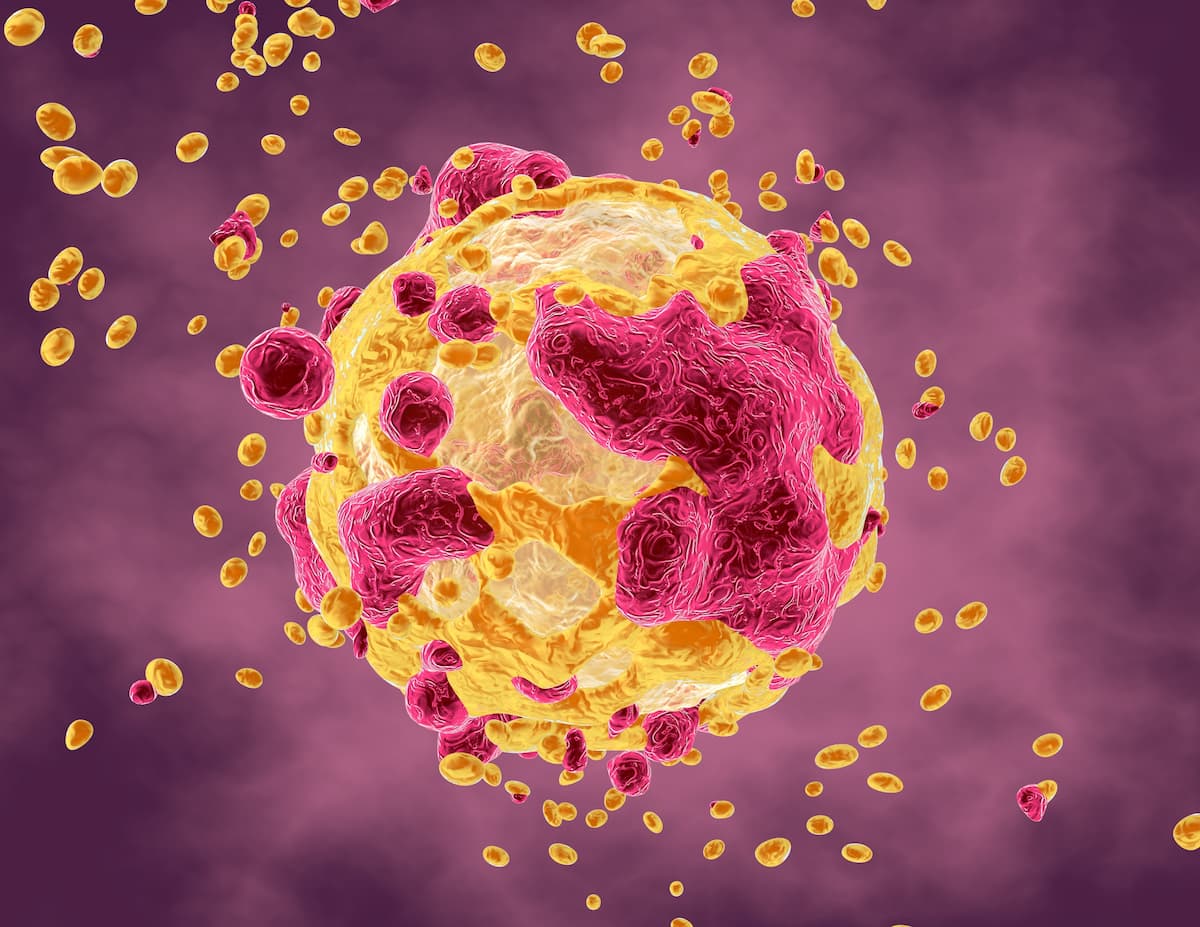Eftilagimod Alfa/Pembrolizumab/RT Elicit Pathologic Responses in Sarcoma
Eftilagimod alfa with pembrolizumab and radiotherapy exceeded the median tumor hyalinization/fibrosis vs historical benchmarks in resectable soft tissue sarcomas.
The triplet treatment combination was safe, and there were no reported toxicities of grade 3 or higher related to eftilagimod alfa and pembrolizumab.

Eftilagimod alfa (Efti) in combination with radiotherapy plus pembrolizumab (Keytruda) met the primary end point of the phase 2 EFTISARC-NEO trial (NCT06128863), significantly exceeding the prespecified median of 35% tumor hyalinization/fibrosis vs the historical median of 15% with radiotherapy alone as a treatment for patients with resectable soft tissue sarcoma, according to a press release from the developer, Immutep Limited.1
More detailed results from the trial will be presented at a future medical meeting, according to study investigators.
Previously, in November 2024, preliminary results from the trial were shared at the Connective Tissue Oncology Society Annual Meeting.2 Those results found that, in a preliminary analysis of 21 patients, the trial demonstrated a median of 50% tumor hyalinization/fibrosis.3,4
Additionally, at the data cut-off of October 20, 2024, 71.4% of patients achieved a pathologic response defined as 35% or more hyalinization/fibrosis, and 9.5% achieved a complete pathologic response.
In the press release, it was noted that tumor hyalinization is an early surrogate end point that has been correlated with enhanced overall survival and recurrence-free survival in patients with soft tissue sarcomas.
EFTISARC-NEO is a single-arm, single-stage trial evaluating the efficacy and safety of eftilagimod alfa with pembrolizumab and radiotherapy in the neoadjuvant treatment of patients with soft tissue sarcomas.
“It is encouraging to see the chemotherapy-free combination with [eftilagimod alfa] far exceed the ambitious target we initially set for the trial's primary end point in resectable soft tissue sarcoma. These results support our belief that [eftilagimod alfa’s] activation of antigen-presenting cells, and in turn a broad adaptive and innate immune response, helps transform the immunosuppressed tumor microenvironment of soft tissue sarcomas leading to strong anti-cancer efficacy,” stated Katarzyna Kozak, MD, PhD, and Paweł Sobczuk, MD, PhD, medical oncologists at the Department of Soft Tissue/Bone Sarcoma and Melanoma at the Maria Sklodowska-Curie National Research Institute of Oncology and the trial’s principal investigators, in the press release.1
As of January 2025, the trial completed enrollment with a total of 40 patients. Eligible patients had primary or locally recurrent deep-seated extremities, girdles, and/or superficial trunk soft tissue sarcoma; a grade 2 or 3 tumor according to Fédération Nationale des Centres de Lutte contre le Cancer; a primary tumor with a size of 5 cm at instrumental staging, or locally recurrent of any size; measurable disease per RECIST v1.1; and non-metastatic disease.5
Those with Ewing sarcoma, Alveolar, and embryonal rhabdomyosarcoma; prior treatment with eftilagimod alfa and anti-PD-1/PD-L1 inhibitors; and prior radiotherapy to tumor-involved sites were excluded from trial participation.
Patients received subcutaneous eftilagimod alfa at 20 mg every 2 weeks for 5 doses, intravenous pembrolizumab at 200 mg every 3 weeks for 3 cycles, and radiotherapy at 50 Gy (25 x 2 Gy). Eftilagimod alfa and pembrolizumab are given concurrently with radiotherapy; surgery is scheduled 5 to 6 weeks after the completion of radiotherapy.
The trial’s primary end point was pathologic response. Secondary end points included disease-free survival, local recurrence-free survival, distant metastasis-free survival, overall survival, response rate, number of patients completing neoadjuvant therapy, and number of patients experiencing adverse events.
Regarding safety, it was reported that the triplet combination is safe, and no toxicities of grade 3 or higher were related to eftilagimod alfa and pembrolizumab.2
“There remains a very high unmet need in this aggressive orphan cancer indication, and we look forward to presenting detailed results at a medical meeting later this year,” Kozak and Sobczuk concluded.1
References
- Immutep’s Efti with radiotherapy & KEYTRUDA® (pembrolizumab) meets primary endpoint in phase II for soft tissue sarcoma. News release. Immutep Limited. May 26, 2025. Accessed May 28, 2025. https://tinyurl.com/2apk9eu5
- Positive data from phase II trial in soft tissue sarcoma presented at CTOS 2024 annual meeting. News release. Immutep Limited. November 14, 2024. Accessed May 28, 2025. https://tinyurl.com/yjr7vuka
- Schaefer IM, Hornick JL, Barysauskas CM, et al. Histologic appearance after preoperative radiation therapy for soft tissue Sarcoma: Assessment of the European Organization for Research and Treatment of Cancer-Soft Tissue and Bone Sarcoma Group Response Score. Int J Radiat Oncol Biol Phys. 2017 Jun 1;98(2):375-383. doi:10.1016/j.ijrobp.2017.02.087. Epub 2017 Feb 24. PMID: 28463157.
- Rao SR, Lazarides AL, Leckey BL, et al. Extent of tumor fibrosis/hyalinization and infarction following neoadjuvant radiation therapy is associated with improved survival in patients with soft-tissue sarcoma. Cancer Med. 2022 Jan;11(1):194-206. doi:10.1002/cam4.4428. Epub 2021 Nov 27. PMID: 34837341; PMCID: PMC8704179.
- Pembrolizumab in combination with eftilagimod alpha and radiotherapy in neoadjuvant treatment of patients with soft tissue sarcoma - EFTISARC-NEO trial (EFTISARC-NEO). ClinicalTrials.gov. Updated February 10, 2025. Accessed May 28, 2025. https://tinyurl.com/mpcwvdpw
Sarcoma Awareness Month 2023 with Brian Van Tine, MD, PhD
August 1st 2023Brian Van Tine, MD, PhD, speaks about several agents and combination regimens that are currently under investigation in the sarcoma space, and potential next steps in research including immunotherapies and vaccine-based treatments.